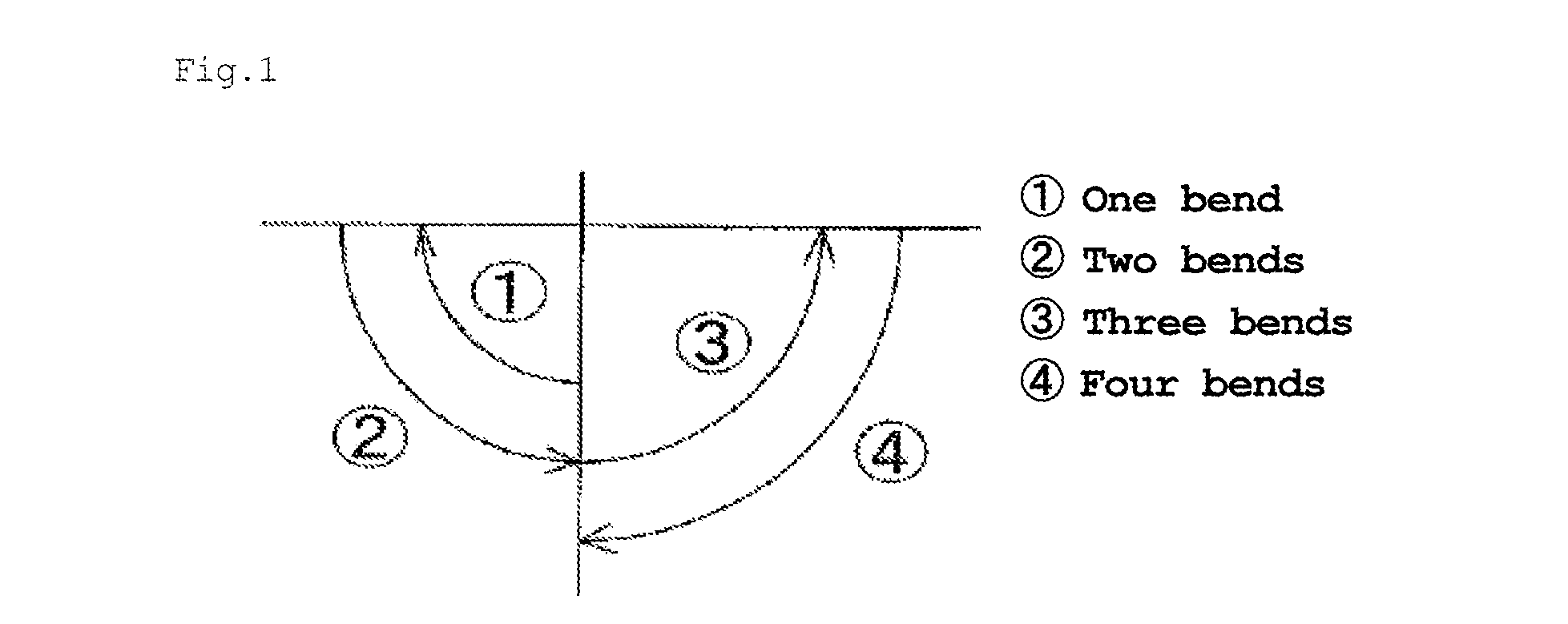Electrode material for aluminum electrolytic capacitor, and method for producing same
a technology of electrolytic capacitors and electrodes, which is applied in the manufacture of electrolytic capacitors, capacitors, coatings, etc., can solve the problems of non-uniform etching pits, heavy disposal of hydrochloric acid, and considerable environmental impact of hydrochloric acid, so as to increase the volume efficiency of electrostatic capacitance, improve bending strength, and increase the effect of electrostatic capacitan
- Summary
- Abstract
- Description
- Claims
- Application Information
AI Technical Summary
Benefits of technology
Problems solved by technology
Method used
Image
Examples
examples
[0078]The present invention is described in more detail below with reference to Examples and Comparative Examples.
[0079]The bending strength of each electrode material was measured in accordance with the MIT Automatic Folding Endurance Test defined by the Electronic Industries Association of Japan (EIAJ RC-2364A). The test was conducted using the MIT Folding Endurance Tester specified in JIS P8115. In this test, the number of bends at the point of breaking was determined to be the bending strength of each electrode material. The number of bends was counted as shown in FIG. 1. Specifically, bending a test piece 90° was counted as one bend. When the test piece was returned to its original position, the number of bends became two. When the test piece was bent 90° toward the opposite direction, the number of bends became three. When the test piece was then returned to its original position again, the number of bends was counted as four. Table 1 shows the results of the bending strength ...
PUM
| Property | Measurement | Unit |
|---|---|---|
| thickness | aaaaa | aaaaa |
| total thickness | aaaaa | aaaaa |
| total thickness | aaaaa | aaaaa |
Abstract
Description
Claims
Application Information
 Login to View More
Login to View More - R&D
- Intellectual Property
- Life Sciences
- Materials
- Tech Scout
- Unparalleled Data Quality
- Higher Quality Content
- 60% Fewer Hallucinations
Browse by: Latest US Patents, China's latest patents, Technical Efficacy Thesaurus, Application Domain, Technology Topic, Popular Technical Reports.
© 2025 PatSnap. All rights reserved.Legal|Privacy policy|Modern Slavery Act Transparency Statement|Sitemap|About US| Contact US: help@patsnap.com

